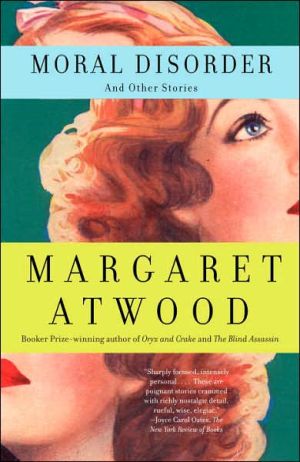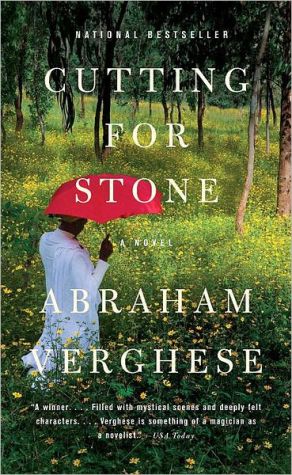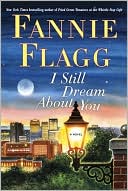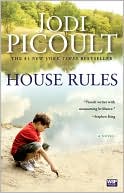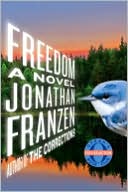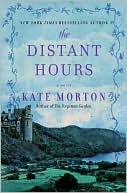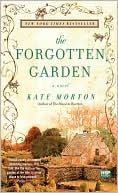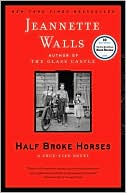Moral Disorder and Other Stories
Margaret Atwood’s latest brilliant collection of short stories follows the life of a single character, seen as a girl growing up the 1930s, a young woman in the 50s and 60s, and, in the present day, half of a couple, no longer young, reflecting on the new state of the world. Each story focuses on the ways relationships transform a character’s life: a woman’s complex love for a married man, the grief upon the death of parents and the joy with the birth of children, the realization of what...
Search in google:
Margaret Atwood’s latest brilliant collection of short stories follows the life of a single character, seen as a girl growing up the 1930s, a young woman in the 50s and 60s, and, in the present day, half of a couple, no longer young, reflecting on the new state of the world. Each story focuses on the ways relationships transform a character’s life: a woman’s complex love for a married man, the grief upon the death of parents and the joy with the birth of children, the realization of what growing old with someone you love really means. By turns funny, lyrical, incisive, earthy, shocking, and deeply personal, Moral Disorder displays Atwood’s celebrated storytelling gifts and unmistakable style to their best advantage.The Barnes & Noble ReviewOne of the silliest ideas about the uses of fiction is that it should offer lessons in how one should live. But sentence by sentence, paragraph by paragraph, Margaret Atwood manages to cram so much spiky wisdom into her work that sometimes they do seem like a primer in the lives of intellectual women of the 20th century. The stories in Moral Disorder do not quite add up to a novel, nor are they explicitly linked. Some are told in first person; others in third. But taken together, they may comprise the life of one woman, with a husband named Tig and a difficult younger sister, offered up in slices from different decades. The collection begins with a couple in late middle age, juxtaposing the cozy breakfast table togetherness with the daily ritual of absorbing the bad news from the world. Atwood's woman -- called Nell in some of the stories -- grows up with conventional expectations in the '50s, genuinely fascinated with homemaking manuals and knitting a layette set for her much younger sister, for whom she will serve as a nearly surrogate parent. During the '60s and '70s, she is in turn an unmarried scholar, a step-parent, and a second wife living on a rural farm. Atwood's particular genius has always been a lack of squeamishness at showing how women can sabotage each other. This comes out especially well in a section on the "dumb bunnies" of classic literature, told from the viewpoint of a high school girl, and the character of Oona, the purportedly feminist, extremely high maintenance first wife of Nell's husband for whom Nell does several extraordinary favors. Atwood, of course, belongs nowhere near the self-help section, but her characters wrestle with the big problems of daily life with an intellectual intensity that feels nearly instructive. --Amy Benfer
THE HEADLESS HORSEMAN\ For Halloween that year -- the year my sister was two -- I dressed up as the Headless Horseman. Before, I'd only ever been ghosts and fat ladies, both of which were easy: all you needed was a sheet and a lot of talcum powder, or a dress and a hat and some padding. But this year would be the last one I'd ever be able to disguise myself, or so I believed. I was getting too old for it -- I was almost finished with being thirteen -- and so I felt the urge to make a special effort.\ Halloween was my best holiday. Why did I like it so much? Perhaps because I could take time off from being myself, or from the impersonation of myself I was finding it increasingly expedient, but also increasingly burdensome, to perform in public.\ I got the Headless Horseman idea from a story we'd read in school. In the story, the Headless Horseman was a grisly legend and also a joke, and that was the effect I was aiming for. I thought everyone would be familiar with this figure: if I'd studied a thing in school I assumed it was general knowledge. I hadn't yet discovered that I lived in a sort of transparent balloon, drifting over the world without making much contact with it, and that the people I knew appeared to me at a different angle from the one at which they appeared to themselves; and that the reverse was also true. I was smaller to others, up there in my balloon, than I was to myself. I was also blurrier.\ I had an image of how the Headless Horseman was supposed to look. He was said to ride around at night with nothing on top of his shoulders but a neck, his head held in one arm, the eyes fixing the horrified viewer in a ghastly glare. I made the head out of papier mâché, using strips of newspaper soaked in a flour-and-water paste I cooked myself, as per the instructions in The Rainy Day Book of Hobbies. Earlier in my life -- long ago, at least two years ago -- I'd had a wistful desire to make all the things suggested in this book: animals twisted out of pipe cleaners, balsa-wood boats that would whiz around when you dropped cooking oil into a hole in the middle, and a tractor thing put together out of an empty thread spool, two matchsticks, and a rubber band; but somehow I could never find the right materials in our house. Cooking up paste glue was simple, however: all you needed was flour and water. Then you simmered and stirred until the paste was translucent. The lumps didn't matter, you could squeeze them out later. The glue got quite hard when it was dry, and I realized the next morning that I should have filled the pot with water after using it. My mother always said, "A good cook does her own dishes." But then, I reflected, glue was not real cooking.\ The head came out too square. I squashed it at the top to make it more like a head, then left it down by the furnace to dry. The drying took longer than I'd planned, and during the process the nose shrank and the head began to smell funny. I could see that I should have spent more time on the chin, but it was too late to add on to it. When the head was dry enough, at least on the outside, I painted it what I hoped was a flesh colour -- a wishy-washy bathrobe pink -- and then I painted two very white eyeballs with black pupils. The eyes came out a little crossed, but it couldn't be helped: I didn't want to make the eyeballs grey by fooling around with the black pupils on the damp white paint. I added dark circles under the eyes, and black eyebrows, and black enamel hair that appeared to have been slicked down with brilliantine. I painted a red mouth, with a trickle of shiny enamel blood...
\ A. S. ByattMoral Disorder is a perfect title—apparently one from a novel abandoned by Atwood's husband, which fits. And the work, with its isolated tales, some in the first person, some in the third, is a perfect shape for contemplating life and death. It is like our memories: There are things that persist in refusing to be forgotten, are as clear as the day they happened, whereas all sorts of more apparently significant things vanish into dust or persist only in old newspapers and fashion magazines. A life, unlike a biography, does not unfold in a neat progression. Nor is it entirely incoherent. Each of these stories coheres round a defined patch of Nell's life, and each has its own cluster of brilliantly described and unforgettable things, which are as important as the people.\ —The Washington Post\ \ \ \ \ Alice TruaxOne doubts that Atwood herself believes in happy endings because an ending, by its very nature, can't be happy. Inevitable extinction is the private apocalypse we all face. Perhaps that's why in this collection, dedicated to her family, Atwood too has left a trail of breadcrumbs in the forest—"for anyone who might be following, trying to find her." But it isn't these clues that hold us in thrall, or even the particulars of the woman who scattered them; it's the ferocious, fecund intelligence that invented that forest and everything in it—including its wild dogs. Even as Atwood reminds us that her bad news is also our own, the tremendous imaginative power of her fiction allows us to believe that anything is possible.\ —The New York Times\ \ \ Publishers WeeklyAn intriguing patchwork of poignant episodes, Atwood's latest set of stories (after The Tent) chronicles 60 years of a Canadian family, from postwar Toronto to a farm in the present. The opening piece of this novel-in-stories is set in the present and introduces Tig and Nell, married, elderly and facing an uncertain future in a world that has become foreign and hostile. From there, the book casts back to an 11-year-old Nell excitedly knitting garments for her as yet unborn sister, Lizzie, and continues to trace her adolescence and young adulthood; Nell rebels against the stern conventions of her mother's Toronto household, only to rush back home at 28 to help her family deal with Lizzie's schizophrenia. After carving out a "medium-sized niche" as a freelance book editor, Nell meets Oona, a writer, who is bored with her marriage to Tig. Oona has been searching for someone to fill "the position of second wife," and she introduces Nell to Tig. Later in life, Nell takes care of her once vital but now ravaged-by-age parents. Though the episodic approach has its disjointed moments, Atwood provides a memorable mosaic of domestic pain and the surface tension of a troubled family. (Sept. 19) Copyright 2006 Reed Business Information.\ \ \ \ \ Library JournalThis collection of 11 interconnected short stories opens as a Canadian woman named Nell and her longtime partner, Gilbert (known as Tig), face aging together into an uncertain future. Subsequent tales go back into Nell's childhood-spent partly in the Canadian wilderness with her entomologist father-and proceeds through her adolescence and academic career, culminating in a series of teaching and editing positions. The stories also move through North American cities and lovers and Nell's relationship with Tig, his two adolescent sons, and their life on a farm. "White Horse" is a strong and evocative account of Nell's relationship with younger sister Lizzie, who is schizophrenic, and with Gladys, a white horse rescued from neglect. The final three tales, "The Entities," "The Labrador Fiasco," and "The Boys at the Lab," bring us full circle to the themes of aging and death, as witnessed by caretakers. In these reflective selections, Atwood, one of North America's most prominent and prolific authors (e.g., The Handmaid's Tale, the Booker Prize-winning The Blind Assassin) turns inward, as autobiographical as she has been to date. The result is alternatively humorous and heart-wrenching, occasionally sardonic and always brutally honest in the depiction of our often contorted relationships with one another, with nature, and with ourselves. Demand will be high. Recommended for all fiction and literature collections. [See Prepub Alert, LJ 5/1/06.]-Jenn B. Stidham, Houston Community Coll.-Northeast Copyright 2006 Reed Business Information.\ \ \ \ \ Kirkus ReviewsThe stages of a woman's life and loves are presented in 11 elegantly linked episodes, in the Booker-winning Canadian author's latest collection. Atwood (The Tent, Jan. 2006, etc.) mingles omniscient with first-person narrative, moving backward and forward in time through nearly seven decades, to portray her (initially unnamed) sentient protagonist, a freelance journalist and sometime teacher whose eventual commitment to writing seems born of the secrets and evasions into which a lifetime of relationships and responsibilities propels her. We first meet her (in "The Bad News") as an elderly woman who lives with her longtime companion, Gilbert (nicknamed "Tig"), in a menacing imagined future shaped by environmental and political catastrophes and further imperiled by approaching "barbarians." Next, scenes from her childhood disclose complex feelings toward her somewhat distant mother and the younger sister (Lizzie) she's obliged to help raise, and-while garbed for Halloween as "The Headless Horseman"-resentment of Lizzie's increasingly irrational fears and mood swings. The agonies of being a sensitive teen and a socially challenged "brain" are beautifully captured in "My Last Duchess." Then, Nell (finally named, when Atwood shifts into omniscient narration) finds something less than happiness when the aforementioned Tig leaves his flamboyant, demanding wife Oona for her, and Nell's energies are subsumed for years in caring for him, his two sons, the infuriating Oona and, once again, her unstable, possibly schizophrenic sibling. The final stories are concerned with her aging parents' last days and the legacy of photographs, stories and memories that comprise her family's inchoate history andpoint the way toward a fulfillment perhaps implicit in the jumble of false starts and unresolved commitments that her life has hitherto been. Crisp prose, vivid detail and imagery and a rich awareness of the unity of human generations, people and animals, and Nell's own exterior and inmost selves, make this one of Atwood's most accessible and engaging works yet.\ \ \ \ \ The Barnes & Noble ReviewOne of the silliest ideas about the uses of fiction is that it should offer lessons in how one should live. But sentence by sentence, paragraph by paragraph, Margaret Atwood manages to cram so much spiky wisdom into her work that sometimes they do seem like a primer in the lives of intellectual women of the 20th century. The stories in Moral Disorder do not quite add up to a novel, nor are they explicitly linked. Some are told in first person; others in third. But taken together, they may comprise the life of one woman, with a husband named Tig and a difficult younger sister, offered up in slices from different decades. The collection begins with a couple in late middle age, juxtaposing the cozy breakfast table togetherness with the daily ritual of absorbing the bad news from the world. Atwood's woman -- called Nell in some of the stories -- grows up with conventional expectations in the '50s, genuinely fascinated with homemaking manuals and knitting a layette set for her much younger sister, for whom she will serve as a nearly surrogate parent. During the '60s and '70s, she is in turn an unmarried scholar, a step-parent, and a second wife living on a rural farm. Atwood's particular genius has always been a lack of squeamishness at showing how women can sabotage each other. This comes out especially well in a section on the "dumb bunnies" of classic literature, told from the viewpoint of a high school girl, and the character of Oona, the purportedly feminist, extremely high maintenance first wife of Nell's husband for whom Nell does several extraordinary favors. Atwood, of course, belongs nowhere near the self-help section, but her characters wrestle with the big problems of daily life with an intellectual intensity that feels nearly instructive. --Amy Benfer\ \
